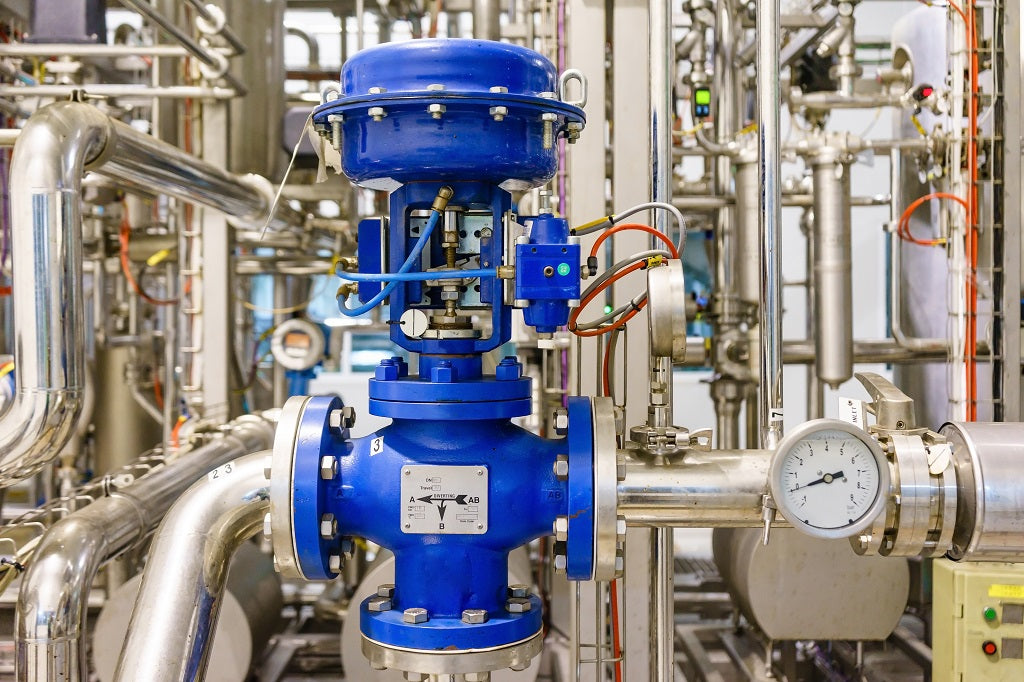Achieve Seamless Combination and Control With Quality Building Automation Controls
In the realm of modern-day structure monitoring, the significance of high quality building automation controls can not be overstated. Embracing quality structure automation controls is not merely a matter of benefit however a tactical imperative for companies aiming to optimize their facilities' efficiency and sustainability.

Advancement of Building Automation Controls
Throughout the past few decades, the development of constructing automation controls has actually considerably changed the way structures are handled and operated. Initially, building automation systems largely concentrated on basic features such as regulating ventilation, air, and home heating conditioning (A/C) systems. However, as technology progressed, these controls have actually ended up being more innovative, enabling a broader variety of structure systems to be incorporated and handled centrally.
The development of building automation controls has seen a shift towards more smart systems that can adapt to changing problems in real-time. This adaptability is critical for maximizing energy efficiency and ensuring passenger convenience. In addition, modern-day building automation controls currently offer features such as predictive upkeep, remote monitoring, and data analytics, allowing center supervisors to make data-driven decisions to improve building performance.

Advantages of Top Quality Integration
The development in building automation regulates in the direction of even more smart systems has emphasized the substantial advantages of top quality integration in maximizing building operations and boosting general effectiveness. This central control likewise gives far better visibility and understandings right into building performance, making it possible for aggressive maintenance and optimization approaches. In general, the benefits of top quality combination in building automation controls are undeniable, using raised efficiency, convenience, and operational efficiency.
Boosted Individual Experience and Accessibility
Enhancing user communication with structure automation controls through instinctive design and enhanced availability elevates the general experience for residents and facility managers alike. By focusing on individual experience, constructing automation systems can become a lot more efficient and easy to use. Instinctive user interfaces, clear navigating, and adjustable setups empower customers to connect with the controls conveniently and efficiently.
Ease of access attributes play a critical role in making sure that all people, consisting of those with specials needs, can make use of the building automation manages with ease. Integrating functions such as voice commands, responsive buttons, and color-contrasted screens can improve access and make the controls a lot more comprehensive.
Furthermore, boosted user experience leads to greater individual contentment, boosted productivity, and far better decision-making. Occupants can change environmental settings according to their preferences, while facility supervisors can efficiently monitor and handle structure systems - control valves. In general, prioritizing customer experience and ease of access in structure automation controls adds to an extra seamless and effective building atmosphere for all stakeholders entailed
Sustainable Practices Via Automation

Additionally, automation can assist in the assimilation of renewable power sources such as solar panels or wind turbines right into structure procedures. By automatically readjusting energy his explanation use based upon the availability of renewable resource, buildings can additionally decrease their dependence on non-renewable resources. This seamless assimilation of sustainable methods not just benefits the atmosphere but likewise boosts the overall functional effectiveness and cost-effectiveness of the building. Via automation, buildings can line up with modern-day sustainability objectives and contribute to a greener future.
Future Trends in Structure Control Equipment
In anticipation of progressing and progressing technologies sustainability practices, the trajectory of structure control systems is poised to accept cutting-edge solutions and transformative strategies. One prominent trend forming the future of building control systems is the raised assimilation of Expert system (AI) and artificial intelligence. These technologies allow structures to adjust in real-time to changing conditions, enhancing energy intake and boosting convenience for occupants. Furthermore, the Net of Things (IoT) is reinventing building control systems by linking sensors and devices to enhance operations and boost effectiveness.
Another crucial trend is the focus on cybersecurity actions to protect versus prospective risks to building automation systems. As structures come to be extra interconnected, ensuring robust cybersecurity procedures will certainly be important to guard delicate data and avoid unauthorized access.
Additionally, the shift in the direction of cloud-based systems is acquiring energy, enabling streamlined control and remote accessibility to structure systems. This helps with much easier tracking, upkeep, and updates, boosting the general efficiency and flexibility of building control systems. As modern technology remains to advancement, these recommended you read fads are expected to shape the future landscape of building automation controls, driving innovation and sustainability in the constructed environment.
Verdict
Future trends in structure control systems are most likely to concentrate on additional enhancing automation capabilities for improved energy effectiveness and total performance. It is vital for structure owners and operators to prioritize the adoption of quality structure automation controls to maximize building procedures and visit this site right here attain lasting sustainability objectives.
In the world of modern structure management, the significance of top quality building automation controls can not be overemphasized. On the whole, the advancement of building automation controls proceeds to drive advancement in the structure management sector, using brand-new possibilities for developing smarter and much more sustainable structures.
The development in structure automation controls in the direction of more intelligent systems has actually emphasized the substantial advantages of high quality combination in enhancing building procedures and boosting total effectiveness. Overall, focusing on customer experience and access in structure automation regulates contributes to a more seamless and effective structure environment for all stakeholders included.
It is vital for building owners and drivers to focus on the fostering of top quality building automation controls to enhance building procedures and accomplish long-lasting sustainability objectives. - control valves